This time last year, I felt out of touch with much of the local dining universe: 2017 was the
year of the "to-do list" for me, during which the much-talked-about local openings outpaced even my appetite (or at least my schedule). But 2018 was the year of catching up, at least to some extent. After submitting my list of "
Top Restaurant Newcomers" for
Eater's annual year in review, I realized that several of them had actually opened late last year.
[1] Well, some of us just operate at a different pace.
Speaking of pace, the posting schedule here at FFT has undeniably slowed of late. Sometimes a lack of inspiration can be to blame, but that really wasn't the case during a year in which we ate quite well, both here at home in Miami and on visits to New York, L.A., Chicago, the Bay Area, the Pacific Northwest, and Greece. Short trips, often on short notice, meant fewer "trophy" dining opportunities, but still no shortage of good meals.
Of the 36 dishes I've put on this list, more than half were served here in South Florida. That's a big difference from years past, when usually only a third or so are locally grown. Unfortunately, several of those are from restaurants that no longer exist. Last year saw the demise of several places that were already fond favorites or rapidly joining that category:
Proof, Gaijin by Cake,
Shelley's,
Wabi Sabi by Shuji.
[2] But all is not lost: Justin Flit, the talented chef from Proof, has been doing a pizza pop-up at
Taurus in Coconut Grove, and has more things in the works with
Ariete's Michael Beltran; Thongsodchareondee Phuket ("Chef Cake") still has the original Cake Thai on Biscayne Boulevard, recently opened a Thai street food stand in the
1-800-LUCKY food hall, and has all sorts of other things in the pipeline; Shelley's chef Cleophus Hethington is working on
Ebi Chop Bar, which will focus on the foods of the African diaspora; I'm still crossing my fingers that Shuji Hiyakawa comes back from Japan to reopen Wabi Sabi.
Anyway, let's get to the good stuff. As always, despite the title, there's no pretense here that this list reflects the "best" of anything other than my personal favorites from a year of dining, listed chronologically.
I'd managed to eat Niven Patel's food several times before he'd opened either the first
Ghee Indian Kitchen in Dadeland, or its sibling in the Design District, including via a
Cobaya dinner he hosted at Rancho Patel last year. But it took me a little while to get to the restaurants. So Ghee – which opened down south a few months after our Cobaya event, and in the Design District in late 2017 – was on my "Top Restaurant Newcomers" list anyway. It's more than just a top newcomer. It's more than just the best Indian restaurant (for my money) in Miami. It's one of Miami's top restaurants, period.
The combination of Indian flavors with a real-deal farm-to-table ethos – the menu highlights an increasing number of items that come straight from the Rancho Patel farm Niven and his family run in Homestead – is on display in pretty much all the dishes. But I have a particular fondness for the chaats: boldly flavored, intriguingly textured, snack-y items like the pani puri, delicate, crispy little cups filled with sprouted moong beans, diced beets into which you spoon a spiced green juice, or the dahi vada, hearty lentil fritters doused with date chutney and yogurt, or the bhel puri bound with mashed avocado and topped with raw tuna.
 |
| potato darphin, Maine uni, jalapeño - Wildair |
I did not spend nearly enough time in New York this past year. In fact, I was only in the city once, for an overnight business trip. That was enough time to pay my first, very belated, visit to
Wildair, Fabian Von Hauske and Jeremiah Stone's delightful Lower East Side wine bar type spot, and to sample a signature dish. It's no wonder the potato darphin can never leave the menu. It starts with the platonic ideal of a McDonald's hash brown or a Channukah latke, depending on your point of reference: hot, crunchy, creamy all at once. That gets brushed with a thin veneer of spicy pickled jalapeño with a hit of citrus (yuzu kosho?). Then it's topped with a generous mound of silky, mildly briny Maine uni, served cold like the winter ocean, for some contrast against the hot potatoes. That's a great dish, even better with some funky pet-nat wine to accompany it.
Boy, did
I ever have a crush on
Shelley's. Chef Cleophus Hethington and barman Brian Griffiths were doing something pretty special in, of all places, sleepy South Miami: a quirky, seafood-centric menu, matched up with an equally eccentric selection of pre-batched or frozen cocktails. I was completely smitten, particularly by the fried chicken sandwich, which mostly played things straight but then threw a curve-ball with a funky fish sauce caramel.
She's relaxed and friendly, but she's serious about her cooking. Like her fried chicken sandwich, one of the best I've ever had. So crispy outside, so juicy inside, layered with pickle chips and fresh greens, on a squishy bun slathered with herb-flecked mayo. But what makes it special is a hit of Vietnamese style fish sauce caramel – a pungent, funky, salty-sweet burst of umami that you don't expect and that keeps drawing you back for more.
Shelley's, I miss you.
 |
| Florida bonito, soy, Hawaiian ginger, sea salt - Gaijin by Cake |
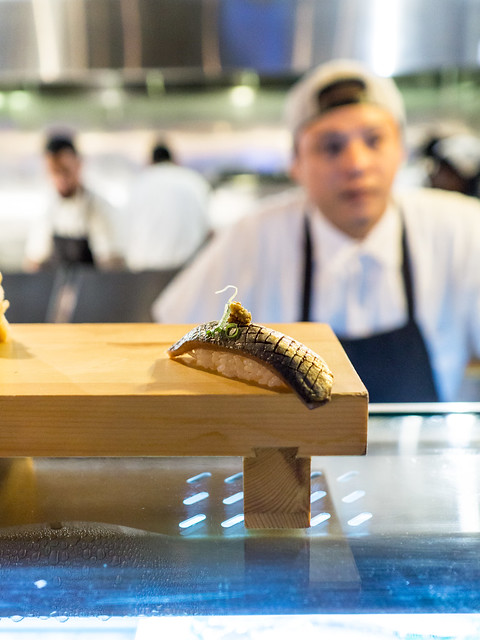 |
| Florida sardine with ginger and scallion- Gaijin by Cake |
There was a brief, shining moment in time when Gaijin by Cake, Cake's short-lived izakaya in Midtown Miami, had the most interesting sushi bar in Miami. With a big assist from Denni Cha, who is now up in Orlando at a place called
Sushi Pop, Cake was running a sushi menu that featured locally sourced fish and aging programs. Miami had never seen anything like this before. You can see the
whole lineup from a March omakase dinner here, from which my favorites were a sashimi of local bonito – a fish you rarely see in restaurants because it tends to spoil quickly, but which has the deep meatiness of really good tuna – and a nigiri of local sardine topped with ginger and scallion, a fish that is typically only used for bait here, but which is absolutely delightful when properly cured.
(continued ...)
We slowed down the pace of our
Cobaya dinners this past year too, but the ones we put on were among my favorites in our nine-year (!) history. In March, the
Fontainebleau hosted us for an
event that was a throwback to the resort's Rat Pack era. William Crandall, the chef of
StripSteak, put together dishes inspired by menus pulled from the hotel's archives – Torchon de Foie Gras, Sole Bonne Femme, Steak Diane – while bar director Seth Weinberg literally pulled some spirits out of the archives, using
bottles dating from the 1950's to 1970's for some equally classically inspired cocktails. The whole night was pretty special, but my favorite thing came from pastry chef Breana Tepper (who's now part of a very good team being assembled by
The Dalmar, a hotel in Fort Lauderdale).
Tepper's dessert tapped into nostalgic veins both low-brow and high-brow: a classic mille-feuille with "ambrosia" flavors. Thankfully, instead of the canned fruit suspended in whipped cream, this popped with the tropical aromas of pineapple and passion fruit, paired with a creamy coconut sorbet. The flavors and the execution were spot on, and this was possibly my favorite dish of the evening (and I'm not even usually a dessert fan).
While we didn't put on as many Cobaya dinners this past year, we did have two back-to-back in March to work around the schedule of Justin Smillie, chef at
Upland. It was worth the effort. This restaurant is steadily working its way into my list of personal favorites, and it was a particular treat to have the chef going off-menu to really capture the flavors of the season, maybe best reflected in this salt marsh lamb dish.
Another dish that says "spring" – salt marsh lamb cooked over fire, mingling crusty, charred fat and tender, deeply flavored meat. Served with crunchy sprouted lentils, roasted sweet potatoes, and a silky, herbaceous green sauce, there was absolutely nothing fancy about this dish and it was absolutely perfect.
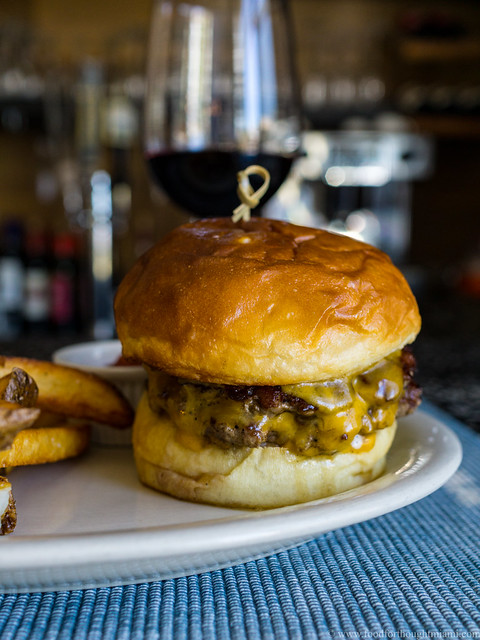 |
| grass-fed cheeseburger - Proof |
Justin Flit's
Proof was a wonderful example of a restaurant that under-promises and over-delivers. It styled itself as a "pizza and pasta" place, which sounds simple enough. But these were great pizzas, with a long-fermented dough and toppings like oxtails braised with black garlic, or soppressata, 'nduja and broccoli rabe. I could passionately argue that Proof's pastas were the best in Miami, though Mike Pirolo at
Macchialina might have something to say about that. And when Justin decided to do a burger – well, I could also passionately argue that his burger was the best in Miami. Each component was carefully considered and executed with precision: two stacked grass-fed beef patties, featuring both crusty char and juicy interior; melted cheese, bolstered even further by a creamy cheddar aioli; caramelized onions, for an extra dose of umami and just a hint of sweetness; a house-baked potato bun, soft and tender but with enough structural integrity to hold everything together to the last bite.
Alas, this burger was my final meal at Proof, which closed in March. But Justin has popped back up as a pop-up in the
Taurus Beer & Whisk(e)y House in Coconut Grove, doing wood-oven pizzas Wednesdays through Saturdays; and the burger still makes guest appearances on Wednesdays by special request. Look for more things coming next year in that Coconut Grove space from Justin and
Ariete's Michael Beltran.
Among the hundreds of places I wanted to try and didn't have time for during our trip to Japan a few years ago was
Afuri Ramen – famous in particular for their yuzu shio ramen. So when we made a brief visit to Portland, Oregon (college touring for Little Miss F), I was thrilled to find out that Afuri had chosen the city to open its first spots outside of Japan. The yuzu shio ramen was every bit as good as I could have hoped: a clean, pure chicken and dried fish broth, seasoned with salt rather than soy sauce, further tweaked with the citrusy brightness of yuzu juice and zest, with a little dollop of chicken fat to stretch and enrich the flavors. Thin, rather delicate noodles, slices of chashu pork, julienned bamboo shoot, sprigs of curly endive, a soft egg and a sheet of nori complete the bowl. So many in the U.S. seem to regard the heavy, creamy pork-bone tonkotsu style as the holy grail of ramen; I'm a big fan of these lighter styles too.
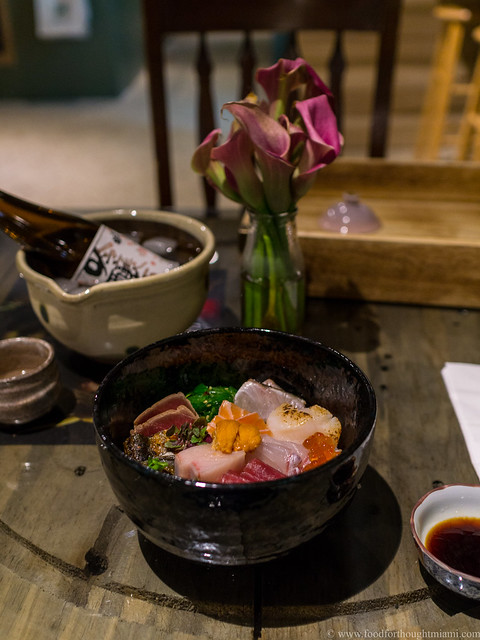 |
| omakase chirashi bowl - Wabi Sabi by Shuji |
In April of last year, I paid a visit to a new Japanese restaurant on the Miami River called Dashi, which I found
interesting enough to write about. Then a few months later Hurricane Irma wreaked some havoc on the location, and Dashi closed. Several months later, the chef, Shuji Hiyakawa, resurfaced in a spot on NE 79th Street just west of the Kennedy Causeway – strategically located right along the path of my commute home. Wabi Sabi was a simple, fast-casual affair, serving a few selections of raw fish and accompaniments over rice, a multi-grain mix or greens. But the real draw was the "omakase" chirashi bowl:
Or, for the ballers out there, there's also an "omakase" bowl, which features an ever-changing assortment of fish and seafood, much of it flown in straight from Tsukiji Market in Japan, served chirashi style over seasoned rice. That may mean blocks of fatty hamachi (yellotwail), ribbons of silky, clean kinmedai (golden-eye snapper), shimmering sayori (half-beak), creamy uni (sea urchin), silver-skinned aji (horse mackerel), house-cured iwashi (sardine) or kohada (gizzard shad), baubles of ikura (salmon roe), or any number of other possibilities, served over a bowl of seasoned rice, with seaweed salad, maybe some sprouts, maybe some soy-cured shiitake mushrooms, and a scatter of shredded nori batons.
Unlike the standard menu options, the omakase bowl is not cheap – pricing usually runs between $35 and $40, depending on what ingredients are featured that particular day. But if you add up what you would pay for a comparable sashimi or sushi order at any good sushi-ya – and the quality of the ingredients at Wabi Sabi is on par with what you'll find at the few places in Miami that fit that description – I think you'll find it to be roughly equivalent. It is also probably the easiest, most convenient way to eat some great sushi that you'll find in Miami, one that you can even take home and eat in front of the TV if you wish.
Alas, Wabi Sabi – also closed. Chef Shuji went back to Japan a month or so ago to attend to family matters, and Wabi Sabi is shuttered, for what I hope is only a temporary basis.
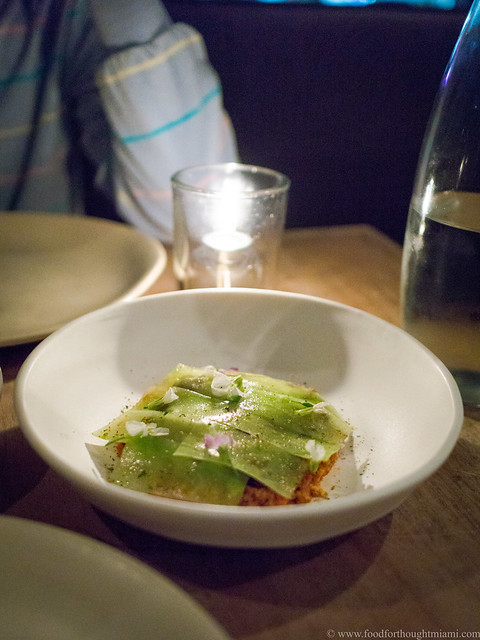 |
| RC 'nduja, JJ's avocado, celtuce, preserves & Weiser rye berries - Rustic Canyon |
In 2014, I took Frod Jr. out to L.A. to look at schools, and also took him to
Rustic Canyon, Jeremy Fox's "wine bar and seasonal kitchen" in Santa Monica. Fox's signature "twice shucked peas" dish
made that year's list. Four years later, I took Little Miss F out to L.A. to look at schools, and was all too happy to pay another visit. This time around, there were no peas on the menu. Still, I loved this combination of house-made 'nduja, a spicy, spreadable pork sausage, mounded over nutty rye berries, a dollop of fruit preserves concealed underneath to give some sweet-tart contrast to the intensity of the 'nduja, all layered with planks of thin-sliced celtuce for some verdant crunch.
I've hardly spent any time there, and so have barely even scratched the surface – but if there's a more fun, diverse, flavorful, accessible place to eat in this country right now than Los Angeles, I'd like to visit it. I was just a little bit skeptical of
Jon & Vinny's, the Italian-American pizza joint opened by Jon Shook and Vinny Dotolo, the team behind
Animal and an ever-expanding roster of other L.A. restaurants, some in collaboration with Ludo Lefebvre.
[3] I was sold as soon as I tried these mozzarella sticks, which were hands-down the best rendition of the checkered-tablecloth staple I've ever had. Not "reinvented," not "a take on," these were just perfect, delicious, wonderful mozzarella sticks, the cheese oozy and hot, the breadcrumbs crackling and crisp, the pomodoro sauce tangy and bright.
Hungry for more? Read
Part 2 and
Part 3 of my favorite dishes of 2018.
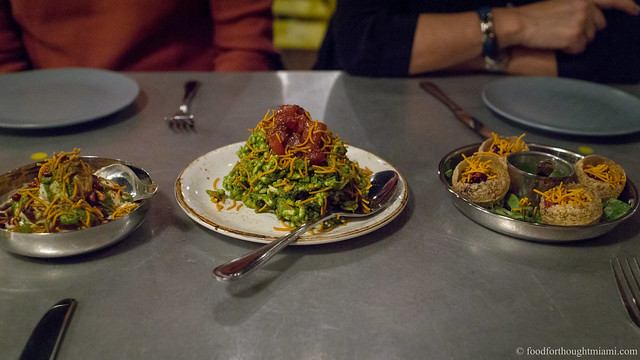

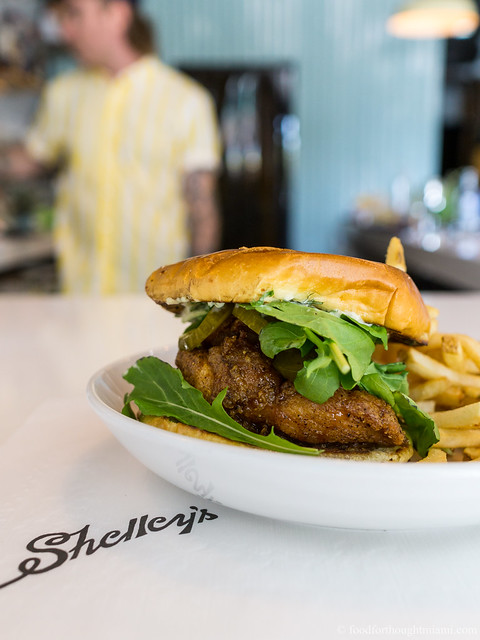


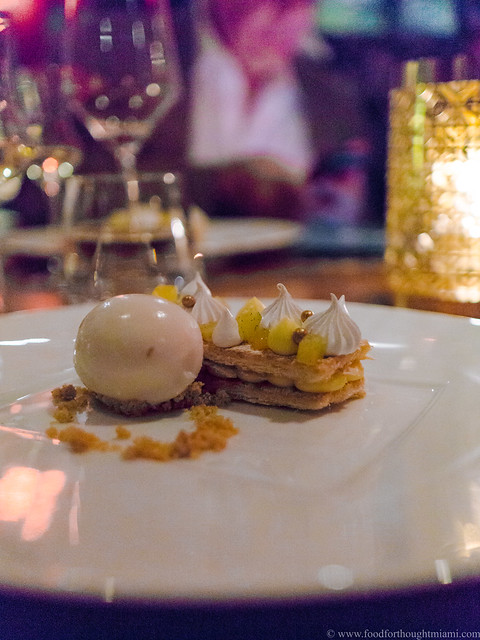


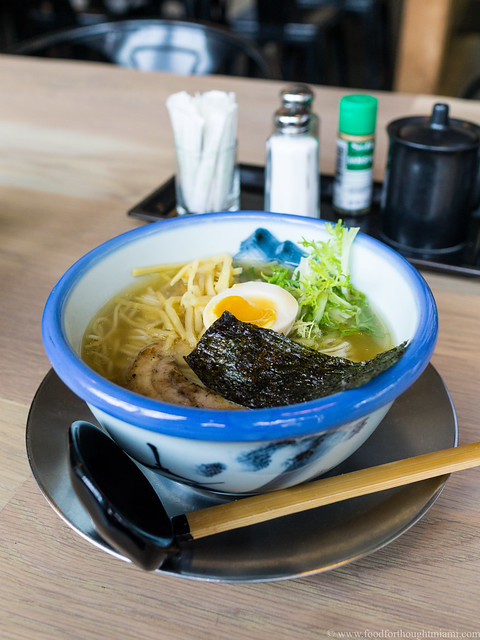




No comments:
Post a Comment